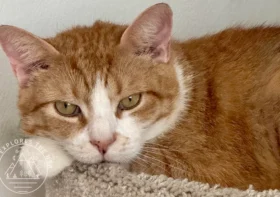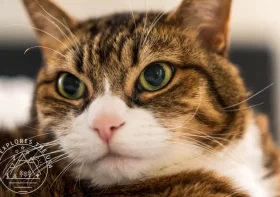Kitten Care Essentials: What to Buy for Foster Kittens
DISCLOSURE: This post may contain affiliate links. If you purchase after clicking one of my links, I may earn a small commission at no extra cost to you. As an Amazon Associate, I earn from qualifying purchases. For more information, see my disclaimer.
Fostering kittens is about more than feeding and cleaning. It gives at-risk kittens a chance to survive and thrive through proper kitten care. Having the right supplies helps create a safe, healthy, and stimulating environment so they can grow strong and be ready for their forever homes. After losing my 20-year-old cat earlier this year, fostering kittens helped heal my heart a little. Now I’m fostering cats of all ages, and it is rewarding to know I can help so many more cats. In this post, I share what I learned setting up my home for my first foster kittens, from essential supplies to toys they actually loved.
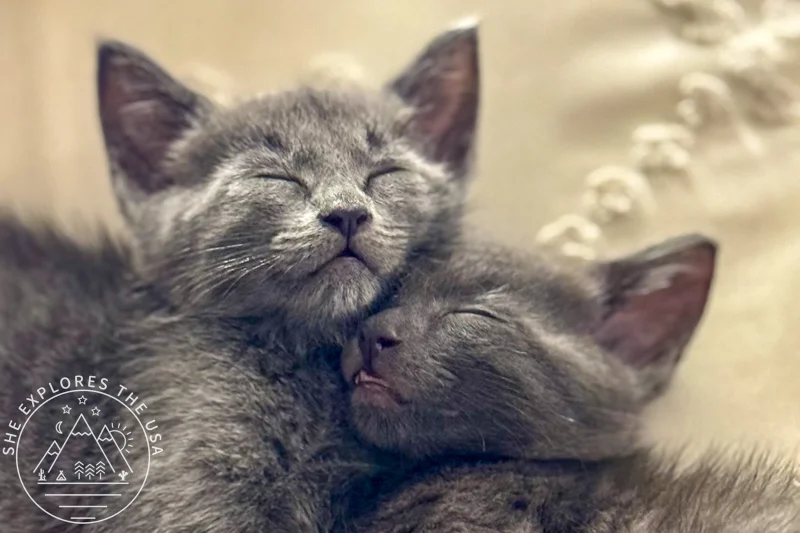
Preparing Your Home for Foster Kittens
You don’t need a ton of space to prepare for foster kittens; they just need a safe, enclosed area where they can feel secure and comfortable. Your local shelter will usually give guidance on the best setup. For my shelter, kittens needed to be in a bathroom, a spare bedroom, or a playpen. Since I live in a small one-bedroom condo, I bought an enclosed playpen to keep in my living room. It quickly became their safe space, and they would happily retreat there even when they were free to roam around the condo. It also made it super easy to bring them back to the playpen whenever I needed to step out or at night.
Before bringing kittens home, I walked through my apartment to check for anything that could be unsafe. Here’s the process I followed:
- Pick a space: Choose a room or area where kittens can stay safely.
- Purchase and set up a playpen: An enclosed playpen is perfect for small spaces and gives kittens a secure home base.
- Clear out hazards: Look for cords, small objects, or anything kittens could get into.
- Protect your belongings if needed: I didn’t worry too much because I’ve had my own cat for 20 years, but if you’re concerned about furniture, floors, curtains, or tables, plan ahead and protect them.
- Prepare kitten supplies and store safely: I have a whole cupboard in my kitchen dedicated to cat supplies, which makes feeding, litter changes, and cleaning easier.
- Familiarize yourself with the nearest emergency clinic: Always know where to go in case of an emergency.
My local shelter also provided extensive online training before assigning my first kittens. It was incredibly helpful for setting up my space and provided PDFs I could refer to once the kittens arrived. Having that guidance made the whole experience much smoother and less stressful.
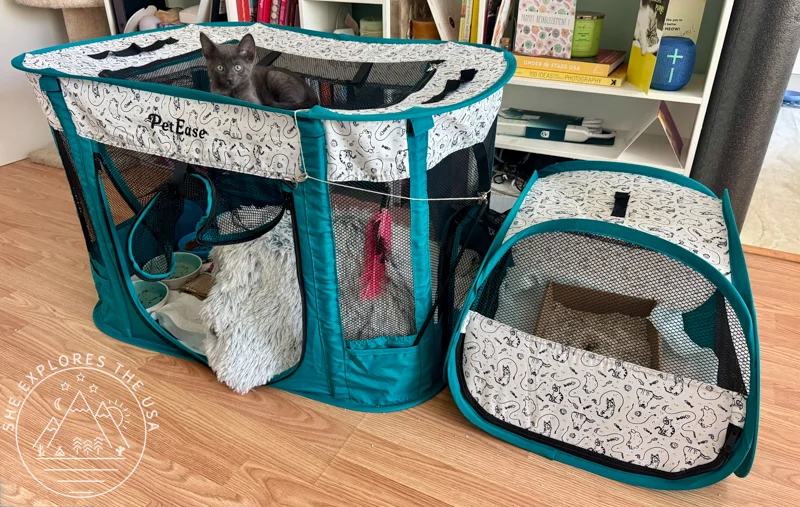
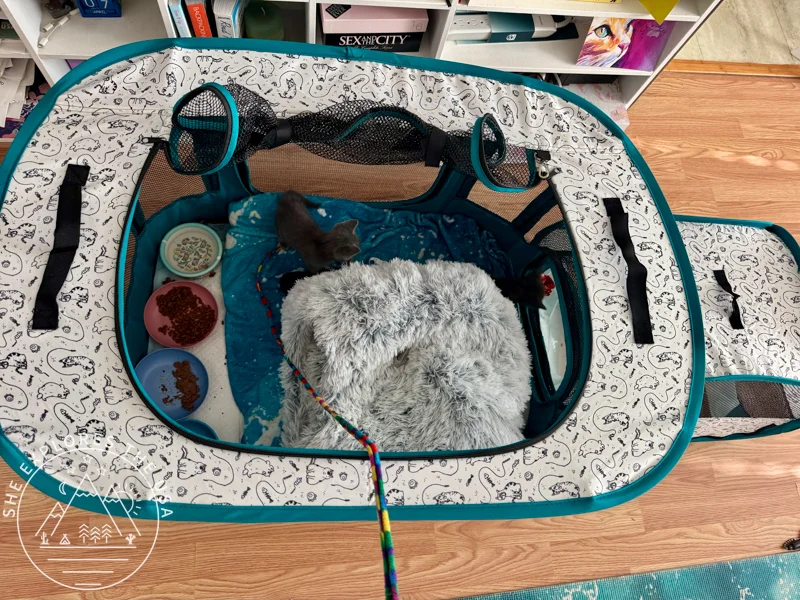
Essential Kitten Supplies for First-Time Fosters
When you’re fostering kittens for the first time, it can feel overwhelming trying to figure out what you actually need. Thankfully, my local shelter provided most of the basics, food, litter, scale, blankets, meds, wipes, and probiotics, so I didn’t have to buy much myself. Still, a few key items made my setup work perfectly for my home. Here are the kitten supplies I personally used and recommend for new foster parents.
Foster Kittens’ Homebase
- Playpen: This playpen became the heart of my foster setup, basically a one-bedroom, one-bath condo for kittens. It was the perfect size for my two six-week-old kittens and gave them a cozy, contained space to play and nap.
- Litter Pan: At first, I used cardboard food trays since the kittens were too small for a regular litter box. Toward the end of my assignment, I switched to a shallow litter pan that worked perfectly once they were a bit bigger.
- Litter Mat: When the kittens were allowed to roam the condo, I added another litter setup in the kitchen and placed a litter mat underneath. It didn’t catch every bit of litter, but it definitely helped minimize scattering.
- Pee Pads: I lined the playpen floor with pee pads to protect it and make cleanup easier, especially during the first week when there were a few messy moments (hello, kitten diarrhea!). They made it quick to keep everything clean and dry.
- Cat Cave Bed: I bought a large cat cave bed that felt a little too big at first, but the kittens loved it right away. They hid inside during their first 48 hours and later slept on top once they got more confident. The pillow inside is covered in faux fur and easy to remove and wash since it’s zippered, which made cleanup super simple. After the kittens left, I sprayed the whole thing thoroughly with Rescue disinfectant to sanitize it before storing it for next time. It’s roomy enough for several kittens and has held up great.
- Churu: The only food I personally bought was Churu, a creamy lickable treat that every cat I’ve met goes absolutely crazy for. It’s great for bonding, training, and coaxing shy foster kittens out of hiding.
The Fun Part of Kitten Care: Toys and Enrichment
Of course, toys and enrichment are a big part of kitten care when fostering. I still had a bunch of cat toys from my cat of 20 years, so I only bought a new scratching post, a toy roller (check out this Instagram video to see my foster kittens interact with this toy!), and a cat teaser wand that every cat I’ve ever met absolutely loves. It’s always a favorite, kittens go nuts for it, and it’s such a good way to help them burn off energy. I played with them many times throughout the day, short bursts here and there whenever they were awake and active. It kept them happy, confident, and well-socialized.
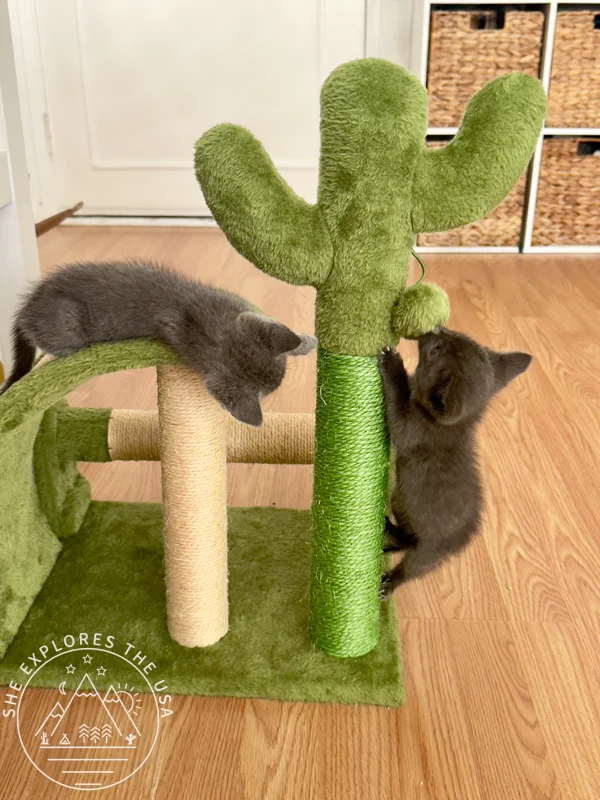
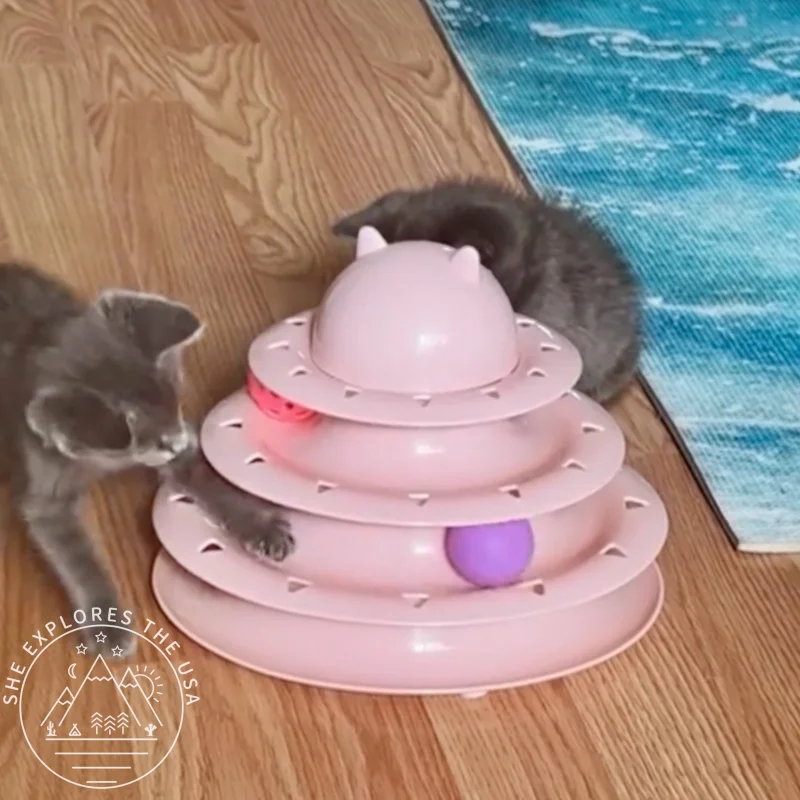
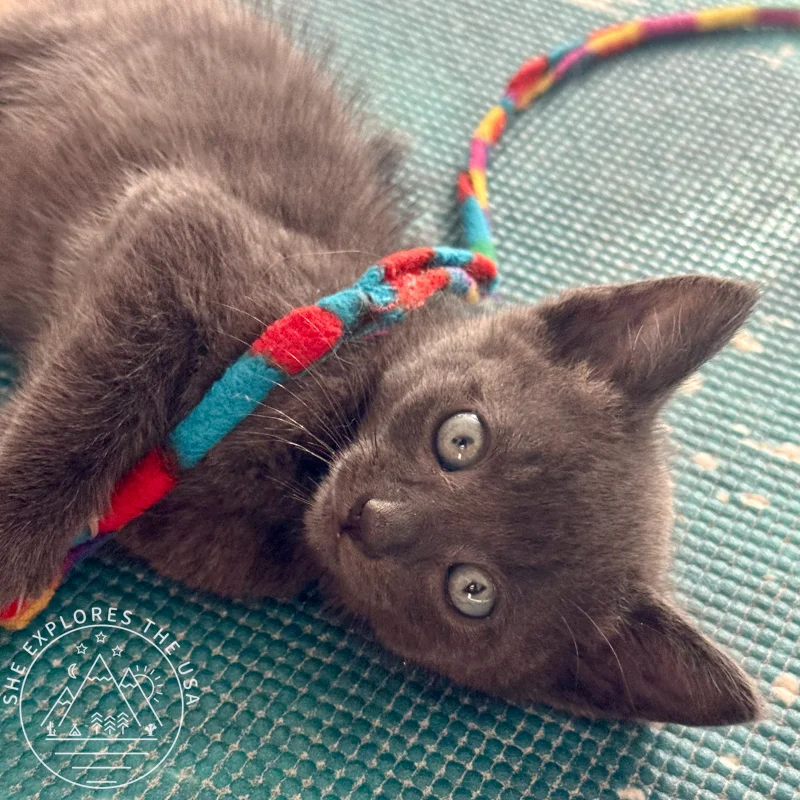
Cleaning, Transport, and Health
For transporting foster kittens, my shelter provided travel boxes, but I used my own pet carrier bag. Anything you can supply helps, since most shelters rely on donations. I’ve had my Sherpa pet carrier for over a decade; it’s durable, easy to clean, and airline-approved, making it a great long-term option.
Since this was my first foster assignment, I stayed in daily contact with the shelter. My kittens were underweight for their age, so I reported their weight, appetite, and litter box updates each day. The shelter guided me on any adjustments and covered all medical care through their vet, which made everything much easier.
After the kittens left, I cleaned and disinfected everything to prep for the next foster. Bedding and soft toys went through a hot wash and sanitizing spray, and the playpen, litter pans, and all surfaces were wiped down with Rescue disinfectant. It’s a safe, effective alternative to bleach and exactly what many shelters use to sanitize between fosters.
What It’s Really Like to Foster Kittens
Welcoming My First Foster Kittens
My first foster assignment was for two weaned kittens, believed to be 5–6 weeks old when they were found, just two days before they came to me. At this stage, kittens are generally weaned or in the process of weaning and usually won’t take a bottle, so they move straight to solid food. As a foster parent, I was responsible for their growth, nutrition, and kitten care, including socialization until they were ready to be spayed or neutered.
These kittens could go overnight without food and were mostly successful using the litter box; however, I still needed to feed them wet food four to five times a day to ensure they gained enough weight.
I got to name them Pixie, the adventurous girl, and Shadow, the more cautious boy. Both weighed just 400g when they arrived, and my primary task was to help them gain weight and become socialized. At first, I offered food anytime they asked and spent the rest of the time playing with them.
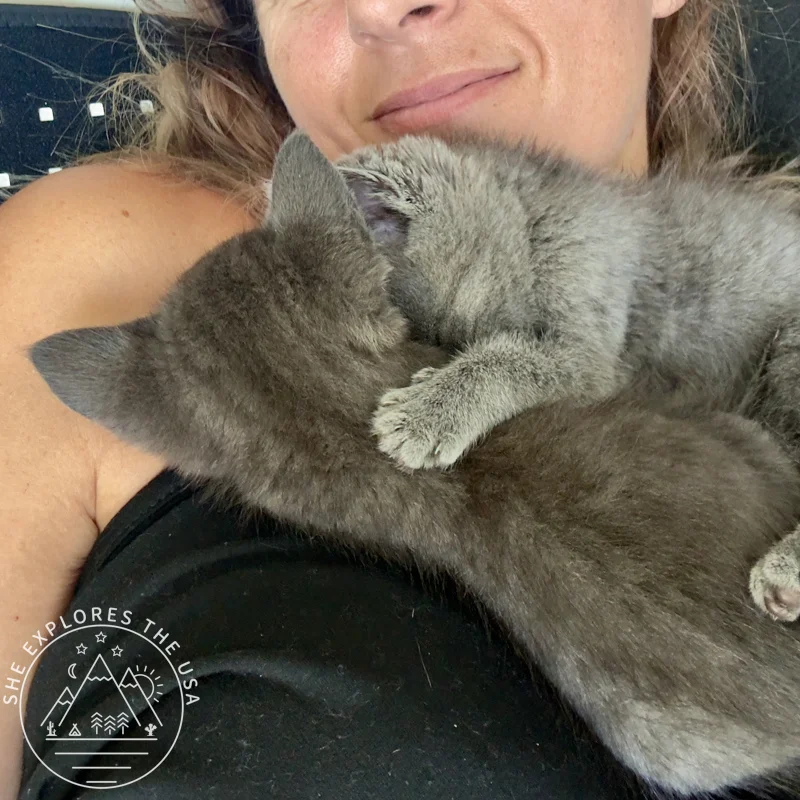
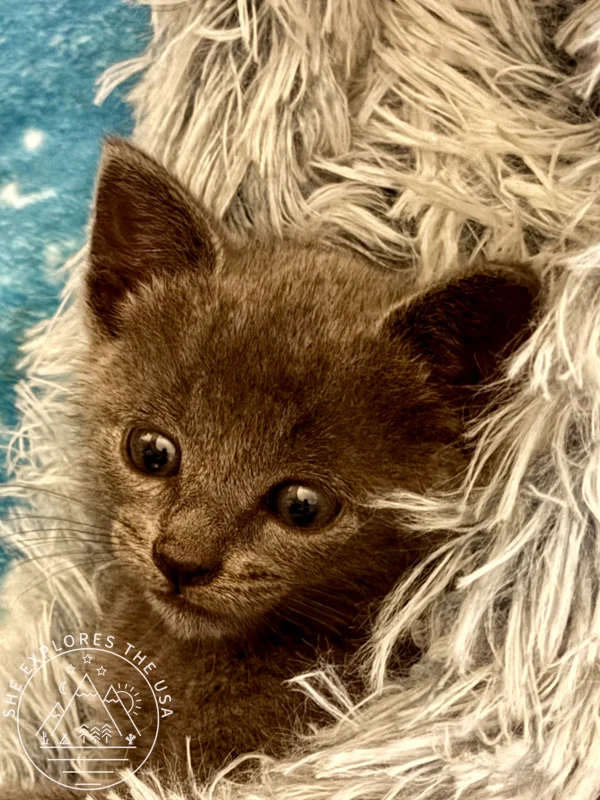
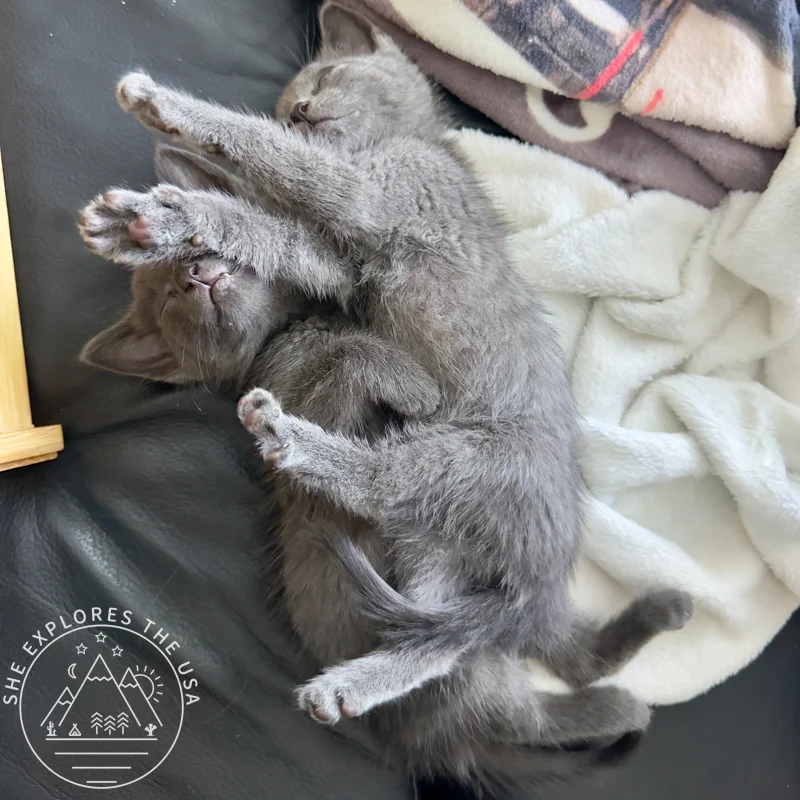
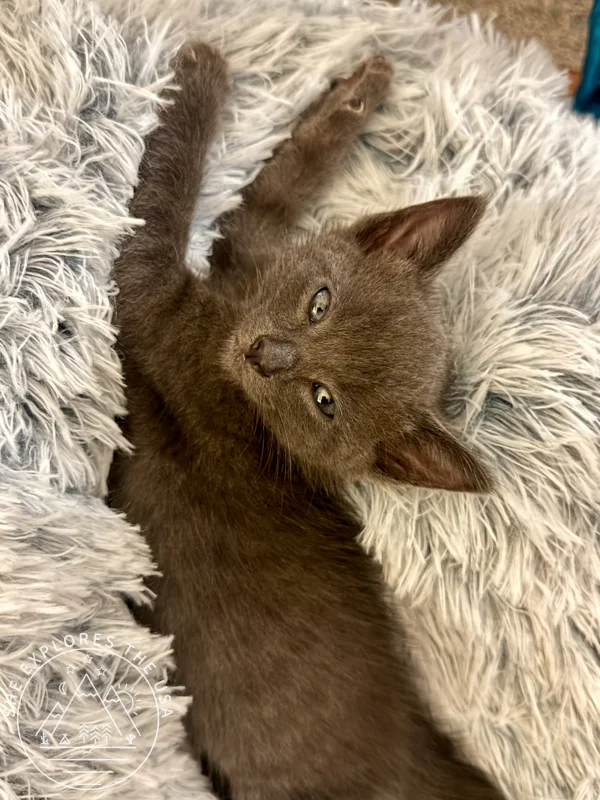
The Ups and Downs of Kitten Care
Providing proper foster kitten care can be challenging at first. The first two weeks were actually super stressful. They both lost about 25% of their weight, had diarrhea, and refused to eat. I had to take them to the vet four times in one week for checkups and subcutaneous fluids to rehydrate them. They also needed medications for a few days, plus FortiFlora probiotics daily. This care helped them get the best possible reset for a healthy start.
Once I found a brand of food they loved, everything changed. They ate like crazy, started gaining weight, and soon had regular stools. Life with them became chaotic but fun, double the zoomies, double the joy.
I picked them up from the shelter two days after they were found and returned them just over a month later. They had their spay/neuter surgery the next day and were adopted the day after that. I was thrilled that they only spent two nights at the shelter before and after their foster assignment before moving into their forever home.
Saying goodbye was tough. I felt selfish for not adopting them, but after recently losing my cat of 20 years, I want to enjoy life without a permanent cat for now, to travel domestically and internationally before settling down again. Fostering is the perfect way to get my cat fix while helping multiple kittens over short periods. Losing my cat broke me, but fostering has been healing and has helped me through recovery and loss.
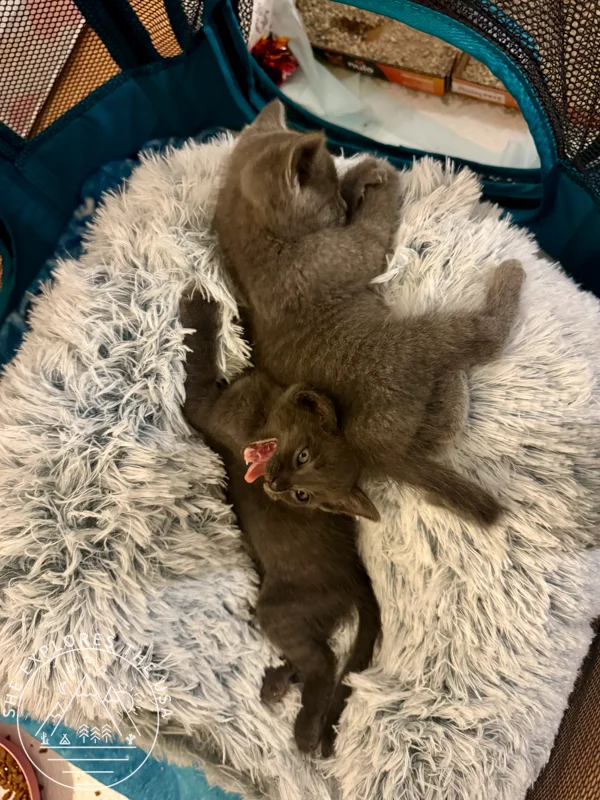
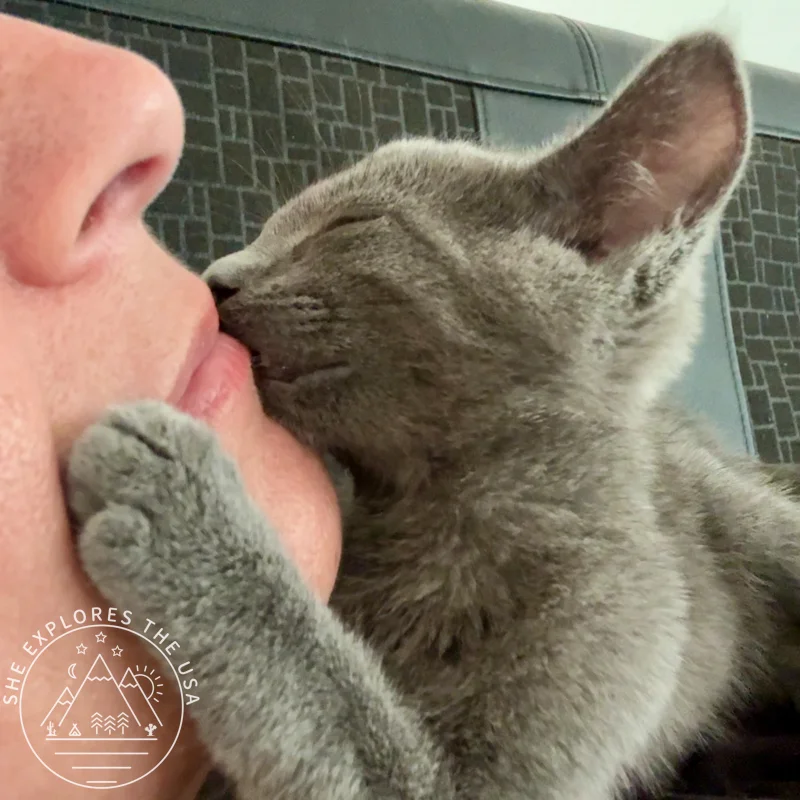
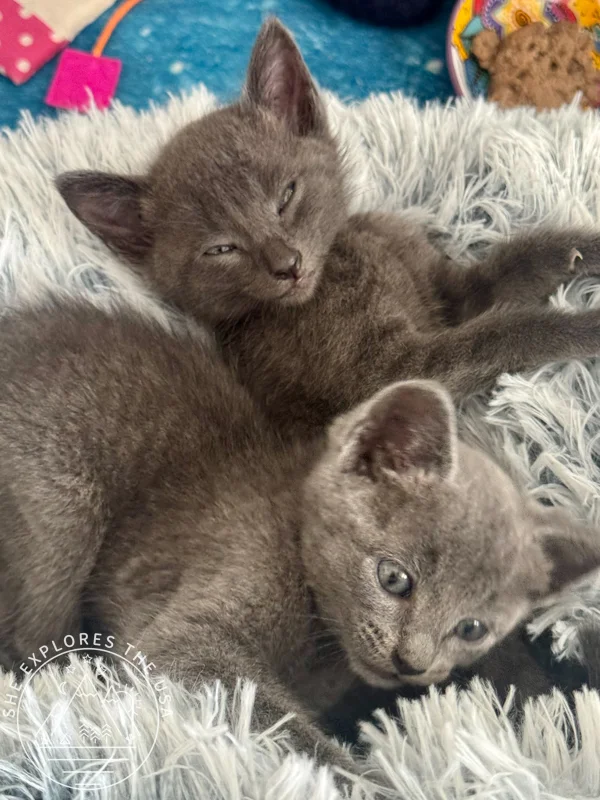
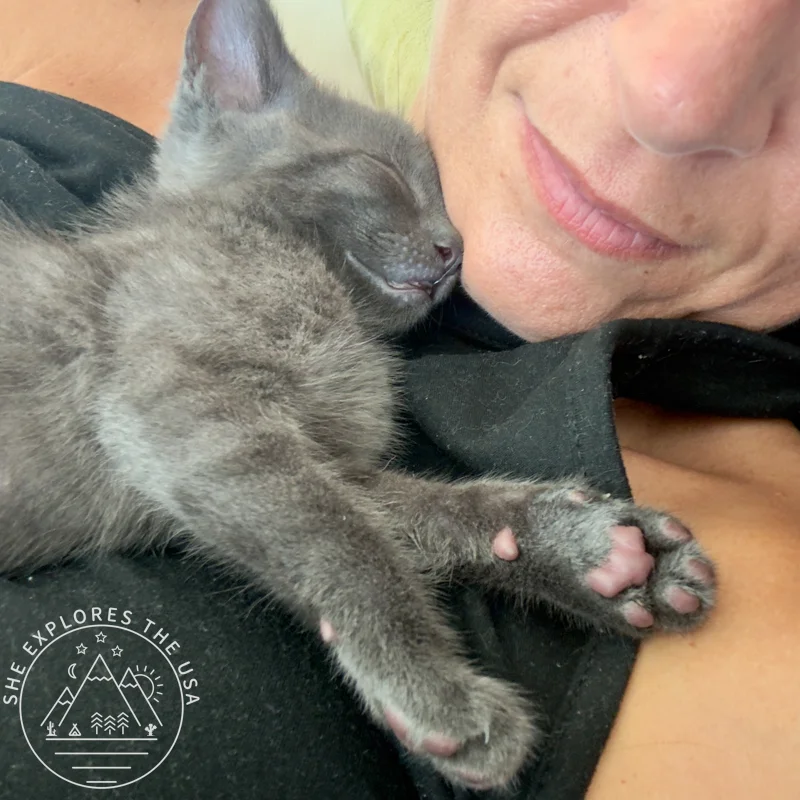
Kitten Care Tips from My First Foster Experience
Expect the unexpected: Even with weaned kittens, things can go sideways fast. Weight drops, diarrhea, and refusal of food are all possible. Stay in close contact with your shelter and don’t panic; it happens. This is all part of kitten care.
Daily care is key: Feeding, playing, and monitoring litter box habits multiple times a day made a huge difference in their growth and socialization. Short, frequent sessions are easier for you and more comfortable for the kittens. Consistent kitten care helps them thrive.
Find the food they love early: Once I discovered a brand Pixie and Shadow couldn’t get enough of, weight gain and healthy stools followed quickly. Don’t be afraid to try a few options to see what works.
Toys and enrichment matter: Wand toys, scratching posts, and roller toys kept them engaged, burned off energy, and taught them appropriate play behavior. Rotating toys keeps kittens curious and happy. Interactive play is an important part of kitten care.
Prep your space and supplies: A secure playpen, litter setup, bedding, and a clean, kitten-proof environment made daily care manageable. It’s worth taking the time to organize your foster area before the kittens arrive.
It’s emotionally intense: Saying goodbye is hard. Fostering isn’t about keeping the kittens forever; it’s about helping them thrive until their forever home. Be prepared to feel both joy and heartache.
Fostering is rewarding: Despite the challenges, seeing them grow, gain weight, and go to their forever homes is incredibly fulfilling. You’re helping animals in a tangible, meaningful way, while still getting your “cat fix” without long-term commitment.
Final Thoughts on Kitten Care
Fostering your first kittens is a whirlwind of excitement, responsibility, and learning. From setting up a safe space to picking the right food, toys, and enrichment, every detail matters in helping them grow healthy, confident, and happy.
Even though the first week or two can be stressful, seeing your kittens thrive, gain weight, and start exploring their world makes it all worthwhile. Feeding, playing, and spending time with them every day builds trust and helps with socialization, two things that make a lasting difference in their future homes.
Preparation is key: having the right supplies, a clean and safe environment, and a plan for health monitoring and vet care ensures a smooth experience for both you and the kittens. And don’t forget, you’ll get plenty of love, purrs, and cuddles along the way!
Fostering is not only about helping kittens, it’s also about discovering your own patience, flexibility, and the joy of making a real difference in their lives, even if only for a short time.
Post originally published on March 11, 2025, and last updated on December 20, 2025.














